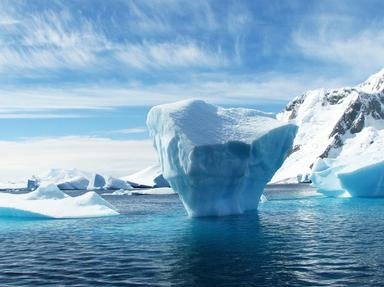Quiz Answer Key and Fun Facts
1. Sailing southwest from the Falkland Islands, this island was our first glimpse of land in Antarctic waters. Unfortunately it was shrouded in mist and rain at the time. Its name comes from both the general shape of the island, and from the mammal that was sighted there by early explorer, George Powell. Which island is this?
2. We were fortunate enough to see quite a few of these magnificent whales feeding on the krill and small fish abundant in the cold waters of Antarctica. Shortly after this picture was taken, he showed us his magnificent tail flukes, which are as unique in his world as finger prints are in ours. What type of whale is this, that characteristically displays its tail flukes while diving?
3. Many countries have research stations in Antarctica; some are only open in the summer while others are staffed year round. The Star Princess participated in a staffing exchange for the Arctowski Research Station, seen here on King George Island, in Admiralty Bay. To what country does the Arctowski Station belong?
4. Taking a break on a floating iceberg, these Adelie penguins are one of the many breeds of penguins that live in Antarctica. The largest breed of penguin lives exclusively in Antarctica. What is it?
5. This exquisite iceberg was seen floating along in the Antarctic Sound. By what name is this passage commonly referred to?
6. This iceberg was so large, it was hard to believe that it was actually an iceberg and not a shoreline. What kind of berg is this?
7. Although these mountains are snow covered, this picture shows a peak on the warmest part of Antarctica - the only part of the mainland that isn't snow and ice covered year round. Where is it?
8. This picture was taken while cruising in the Gerlache Strait. What is the cause of the turquoise streaks?
9. This picture shows Deception Island, on what we were told was a remarkably clear day. Apparently Deception Island is more often shrouded in fog than not. What is deceptive about Deception Island?
10. This picture shows Cape Horn, the southernmost tip of South America. To get there from Antarctica, you have to cross one of the most difficult pieces of water to navigate. What's it called?
Source: Author
skunkee
This quiz was reviewed by FunTrivia editor
spanishliz before going online.
Any errors found in FunTrivia content are routinely corrected through our feedback system.

